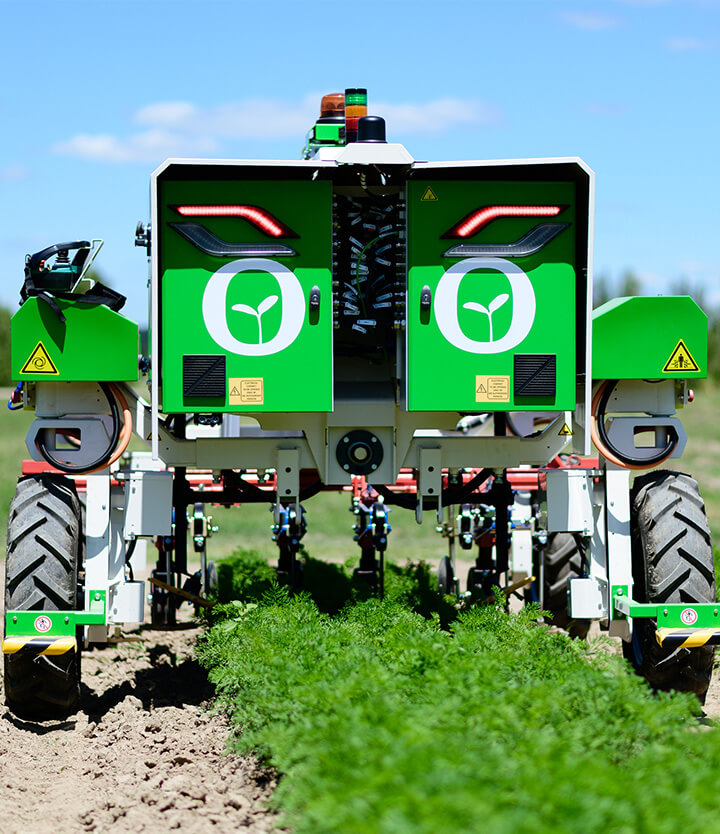You could call it “Oz-Iris”, just like the Egyptian god of agriculture!
For generations, the Cayeux family has been growing irises in the town of Gien in the Centre-Val de Loire region. This year, Oz came to work in this flower-filled lair. Let’s see how this little robot is getting on among the rows of these particularly bright-coloured flowers.
A surprisingly powerful little robot
“The farm has between 17 to 20 hectares of irises growing every year. Up to 1,300 varieties are pampered there, of which half are put on the market. The other half is reserved for the development of new varieties” explains Mr Cayeux, the estate manager. The company is known worldwide, as it has clients in all European countries and also in Russia and the United States.
He continues: “A contact made during an exhibition in Villepinte allowed us to get in touch with Naïo Technologies”. After some years’ thought, the decision was made to invest in the little robot. “At the beginning, the employees took Oz for a toy or a scale model, but when they saw what it could do, they changed their minds!”.
So, Oz efficiently weeds the rows of irises with a toothed tool: one way for the owner to fall in with the agricultural trends anticipated by the company. “We combine chemical and mechanical weeding, with a propensity to reduce the former.”
Oz adapts to being a planter and saves manpower costs
From the year of its purchase, the farm owner adapted the robot well: “As well as weeding – which is what we bought it for – we use the robot for planting irises. Naïo Technologies customised a planting tool for the back of Oz. It works really well!”. Oz therefore pulls a little trolley, allowing an employee to sit there with the bucket resting on the robot. At stake: an obvious time-saving and substantial savings in terms of manpower costs. “Instead of needing 2 or 3 people for planting, there’s just a single employee assigned to this task. He sits on the trolley and it’s very practical”, giving an opportunity to save time for other work on the farm which can’t be mechanised.
Promising trials and adaptations for next year
“The robot has been fitted with twin wheels in order to be able to work on the rows with greater precision!”. In fact, the ground is very stony. The twin wheels stabilise the robot so that it can progress in a straight line in the row. “Some large flints still send it off course, which is why Naïo Technologies is working on even larger wheels.”
The farmer is already planning to hoe and plant using Oz over more land next year. “This year has been a period for getting to grips with it. Using the robot requires some time for adaptation and adequate training of the employees, particularly for mapping.” Nowadays, there are 2 employees on the farm who have the skills to manage it.
We have also been able to try Oz on the various fields to see if it adapted to their structures. “We wanted to avoid the creation of micro-plots and Oz manages this very well. It has no problem weeding 250-metre long rows.”
After a very dry period this summer, the rain has finally arrived in the Centre-Val de Loire region. “Over the next weeks, we will be able to try Oz on wet ground”. Something which delights this iris producer, who’s been looking forward to these raindrops for a very long time!





